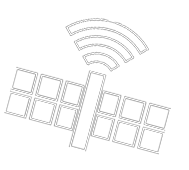- About HELENA
HELENA - HERA LIDAR ENGINEERING MODEL ALTIMETER aims the development of a lidar engineering model (EM) altimeter for current and future ESA AIM missions. The project is primary focused on the development of an altimeter for the HERA mission. HELENA design is based on a Laser Landing Altimeter EngineerinHELENA g Model developed by EFACEC , Portugal in the frame of an ESA project. The laser source of this altimeter is a compact low power consumption microchip laser that emits 1.5μm light pulses. This laser technology enables rangefinder compact designs. The EM of this altimeter has a mass below 1.4kg, dimensions of 12cmx15cmx10cm and was designed to measure distances up to 3km. HELENA main design requirements are a measurement range of 14 km to 500m, an accuracy of 0.5m and mass below 1.5kg. The project aims several activities related to the design of the engineering model, manufacturing, testing, verification and validation.
Consortium: EFACEC Portugal, EFACEC Romania, INOE Romania and ALMILAR Portugal.
About HERA (from ESA oficial website)
Hera – named after the Greek goddess of marriage – is a candidate ESA mission that will be humankind’s first probe to rendezvous with a binary asteroid system, a little understood class making up around 15% of all known asteroids. Hera is the European contribution to an international double-spacecraft mission. NASA will first perform a kinetic impact on the smaller of the two bodies, then Hera will follow-up with a detailed post-impact survey that will turn this grand-scale experiment into a well-understood and repeatable planetary defence technique. While doing so, Hera will also demonstrate multiple novel technologies, such as autonomous navigation around the asteroid – like modern driverless cars on Earth, and gather crucial scientific data, to help scientists and future mission planners better understand asteroid compositions and structures. Due to launch in 2024, Hera would travel to a binary asteroid system – the Didymos pair of near-Earth asteroids. The 780 m-diameter mountain-sized main body is orbited by a 160 m moon, informally called ‘Didymoon’, about the same size as the Great Pyramid of Giza. This smaller body is Hera’s focus: the spacecraft would perform high-resolution visual, laser and radio science mapping of the moon, which will be the smallest asteroid visited so far, to build detailed maps of its surface and interior structure. By the time Hera reaches Didymos, in 2026, Didymoon will have achieved historic significance: the first object in the Solar System to have its orbit shifted by human effort in a measurable way.
The NASA mission called the Double Asteroid Redirection Test, or DART, is due to collide with it in 2022. The impact will lead to a change in the duration of Didymoon’s orbit around the main body. But ground observatories will be watching from a minimum distance of 10 million km, and the immediate aftermath may well be hidden by an expected dust cloud. The observatories’ measurements of Didymoon’s altered orbit are expected to be stuck with a 10% residual uncertainty and the actual transferred momentum – that is, by how much was it deflected? – will not be measured directly, missing a vital piece of information: the mass of Didymoon and the crater shape. By actually venturing to Didymoon, measuring its mass as well as its shifted orbit from up close and performing its own ‘crash scene investigation’ of the asteroid moon’s impact crater and surrounding surface in great detail, Hera will hone our understanding of this grand-scale space experiment. Its data will allow, for the first time, the validation or refinement of numerical models of the impact process at asteroid scale, rendering this deflection technique for planetary defence ready for operational use if ever needed to safeguard our home world, Earth.
DART and Hera were conceived together as part of the international ‘Asteroid Impact Deflection Assessment’ experiment. The two missions are valuable individually, but if flown in concert their overall scientific and technological return is significantly boosted. They will contribute to the important and positive message that international cooperation is key for the achievement of a planetary defence initiative.
more information can be found here
